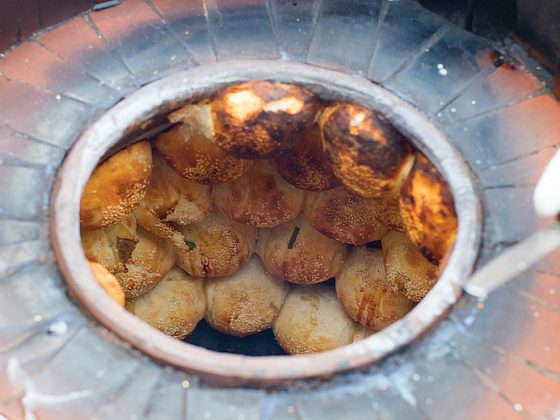WORDS BY Rick Charette
PHOTOS BY Yi Choon Tang
One of the greatest surprises of his life landed on Ye Haichuan’s (葉海川) doorstep in spring this year.
Ye, a lifelong resident of heritage-rich Dadaocheng (大稻埕), one of Taipei’s oldest communities, is the boss of an old-time family-operated eatery of humble noodles that serves up traditional Taiwanese xiaochi (小吃) dishes of equally modest character. Xiaochi literally means “small eats” — i.e., savory snack treats. The key signature offering here is qiezai noodles (切仔麵), thin and chewy noodles presented in a small bowl with various toppings — served either in a clear soup or dry. It has long been a hot-snack staple for the people of Taiwan.
In the spring Ye learned that the unimaginable had happened. His modest two-floor restaurant, Mai Mien Yen Tsai (賣麵炎仔), had been selected for inclusion in the 2019 edition of the Michelin Guide Taipei as a prestigious Bib Gourmand entry. Business has become even busier since that time, but Ye found a window of quiet one recent afternoon to sit down with TAIPEI magazine to discuss the origins of the Ye family enterprise, their food menu and service philosophy, and what the unexpected Michelin culinary laurels mean for the business.
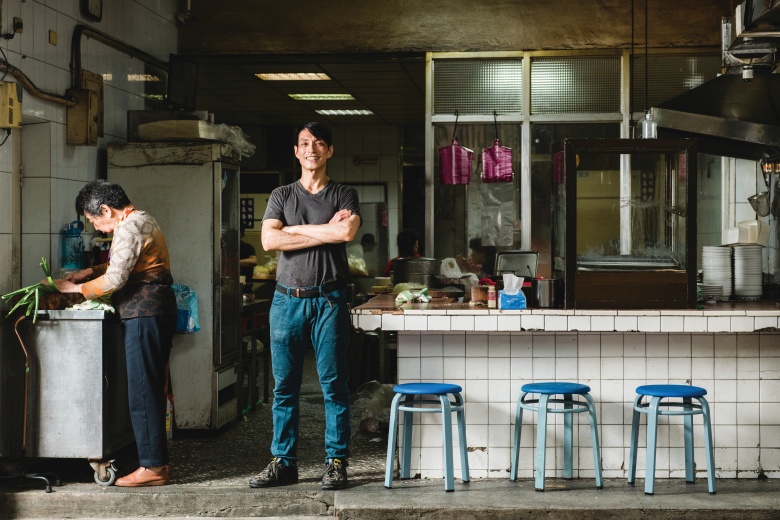
The Mai Mien Yen Tsai Story – “Family Tradition” A Key Ingredient In Every Dish
Mai Mien Yen Tsai is at number 106 on Anxi Street (安西街), which runs parallel to the north section of Dihua Street (迪化街), the cultural and economic heart of Dadaocheng since the 1850s and a major tourist attraction today.
“We’re a Dadaocheng family,” says Ye, “and my grandfather opened our business close by on Liangzhou Street (涼州街), closer to Dihua Street, over 80 years ago.” Directly across the street was a well-known Taiwanese glove-puppetry theater, making the location very busy. In the 1970s the street was widened, however, much reducing the size of the shop, and his father tired of renting. Operations were moved to the present location, the family residence. Two floors were added to the original two, and a ground-level unit given over to the eatery (expanded to a second-floor unit later). The extended clan still fills up all the other units.
“The other side of Anxi Street was originally lined with old-style shophouses and sanheyuan (traditional three-sided courtyard residences, 三合 院),” says Ye, “but these were eventually torn down for expansion of the elementary-school campus opposite, and a tree-lined sidewalk was added. Our long-term customers like the quiet, as do I.” He says their many regular patrons treat the eatery as equal parts social center and dining spot.
In days gone by, when the people of Taiwan were not so well off, customers treated simple shops like Mai Mien Yen Tsai as places for social entertainment. “They treated us like a jiujia (winehouse, 酒家),” says Ye, “instead of staying at small and crowded homes, they would gather with friends and spend hours here.” There are many more social-entertainment options available nowadays, so “few people drink when they eat today, except perhaps for our tourist customers from Japan, where the social custom of having a few cold beers with a simple meal still thrives.”
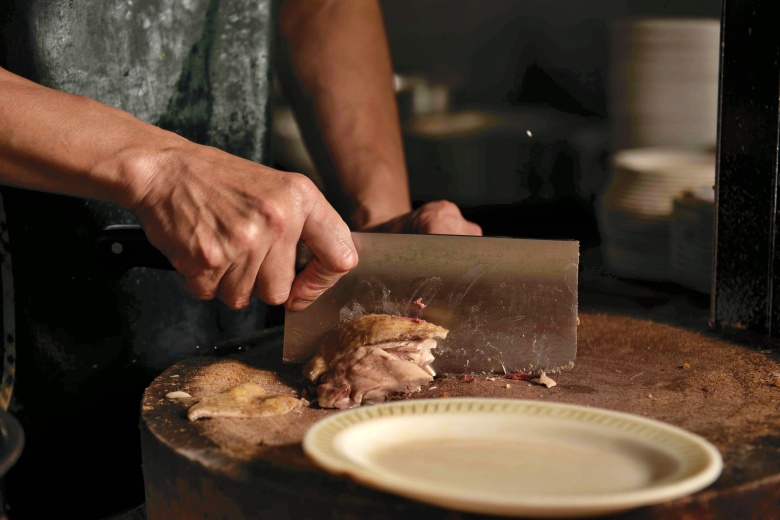
Ye and his two brothers — the third generation — now run the business. Their mother is still at work each day handling various kitchen tasks, as she has for the past 51 years. Ye, now 51, took over in 1991, after a stint in the exciting world of accounting, and his key motivation is to keep the traditions established by his grandfather alive. The brothers’ business philosophy is straightforward – faithful preservation of their grandfather’s recipes and legacy, and continued TLC for the people of their neighborhood. “We learned all our dishes standing at our grandfather’s side,” says Ye, “and we prepare everything exactly as he did. These xiaochi were brought over from China’s Fujian Province (福建) by the pioneering ancestors of today’s Taiwanese. Our grandfather preserved the ‘true tastes of Taiwan.’ Our job is to continue to preserve them for our old-time customers, who have been so faithful to us, and to introduce them to new clientele, both local Taiwan people and curious visitors from overseas.”
Pointing to the prominent “Mai Mien Yen Tsai” shop sign hanging over the street outside, Ye says that “I may be running things now, but this is still my grandfather’s business.” The name can be translated as “Yen Tsai the Noodle Seller.” His grandfather decided that since this was what everyone in the neighborhood called him, they might as well call the shop the same. “Yen Tsai,” literally meaning “Fire Boy,” was his nickname. It arose, says Ye, from an “incident in his youth. Kids are always too interested in cooking fires.”
The Mai Mien Yen Tsai Menu Lineup
Ingredient freshness is essential to the taste and texture of his family’s foods, says Ye, and most of their regular customers will immediately know the difference if sampling the same dishes at other places. Ingredients are delivered early each morning by trusted suppliers they’ve worked with for long periods. Their noodle supplier, from Dihua Street’s famed Yongle Market (永樂市場), has been their partner for longer than Ye remembers.
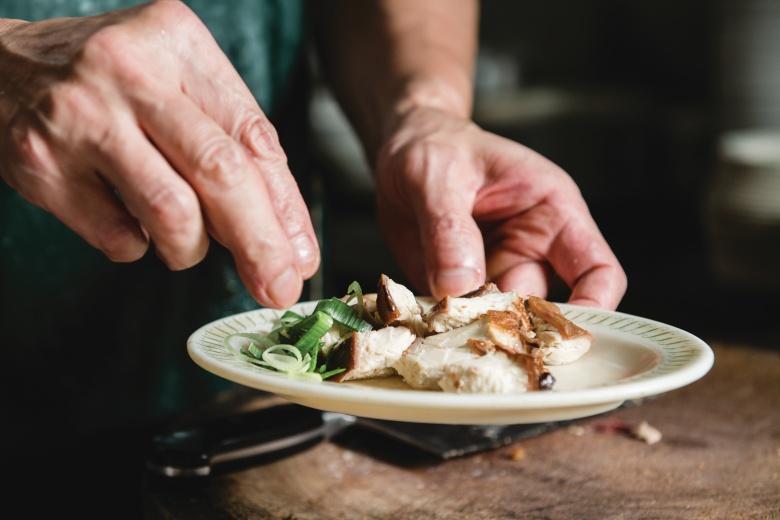
Qiezai noodles have traditionally been seen as a breakfast and lunch snack. Their official hours are 8 am to 3 pm, but the demand for freshness makes life more complicated than that. Operations start at 3 am, and suppliers begin arriving soon after, in order to have everything ready for the first customers. In-theknow locals, says Ye, start showing up at 7:30.
“Our grandfather used a classic recipe for his qiezai noodles,” he states, “and we don’t really introduce any changes, either to our noodle options or our side-dish options.” The “qiezai” in the noodle-dish name, he confirms, refers to the tiny basket in which individual-order noodles are prepared – specifically the motion of dunking the basket in and out of boiling water, and then draining the noodles. The quantity is just enough to fill a small bowl you can lift in the palm of your hand. Qiezai noodles are not meant to be a full meal; a bowlful is the classic Chinese base of either noodles or rice used for a meal. Mai Mian Yen Tsai offers 10 classic side dishes for diners to explore as an accompaniment.
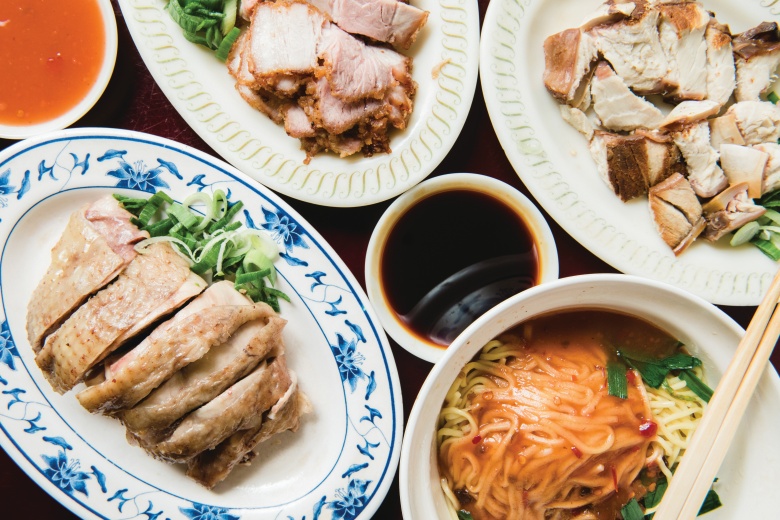
Both qiezai noodle options are served with rouzao (soy-braised minced pork, 肉燥), mung-bean sprouts, chopped chives, and a dash of soy sauce. Catering to modern tastes, no MSG is used, but time-honored tradition is followed with the noodles, with a touch of pork lard added for luster, flavor, and a creamy texture. “We minimize our lard usage,” says Ye, “but it’s a must; without it, the dish is just not the same.” The secret to the restaurant’s soup option, however, is the stock. Mai Mien Yen Tsai cooks a number of the items featured in its side dishes — chicken meat, chicken hearts, pork, pig liver, and squid — in the standard pork-bone soup, making it unusually hearty, savory, and flavorsome. The key to the dry version is the special house sauce that is added directly to the dish (sauce is not standard with qiezai dry noodles). It is a savory/sweet mixture, leaning toward the sweet, with just a hint of sourness.
The restaurant also offers two other staple options, mifen (thin rice noodles, 米粉) and lardy rice. Its signature side dish is its soy-braised pork slices. The “grandfather” way is to carefully trim away all cartilage, bone, and excessive fat, something other sellers do not do, and to fry the pork for a crispy exterior. The process is time-consuming; as noted in the Michelin review above, this treat only comes to table mid-morning. Other side dishes most in demand are the cured pig liver and blanched squid.
When Ye was growing up, qiezai noodle shops were nigh ubiquitous in Taiwan. These days they are slowly becoming a rarity, and few are authentic, he says, because few owners are willing to expend all the time and effort required.
The Michelin Effect – Before & After
The family feels deeply honored to have been recognized with Bib Gourmand status, says Ye, something that would have astounded his grandfather. “We’re always busy,” he says, “but we’ve seen a definite surge of new faces since the Michelin announcement, including tourists from abroad.” He had noticed how night-market vendors and inexpensive eateries had been included in the initial Michelin Guide Taipei in 2018, but the idea that Michelin’s mystery inspectors would ever even consider stepping into his place never even crossed his mind.
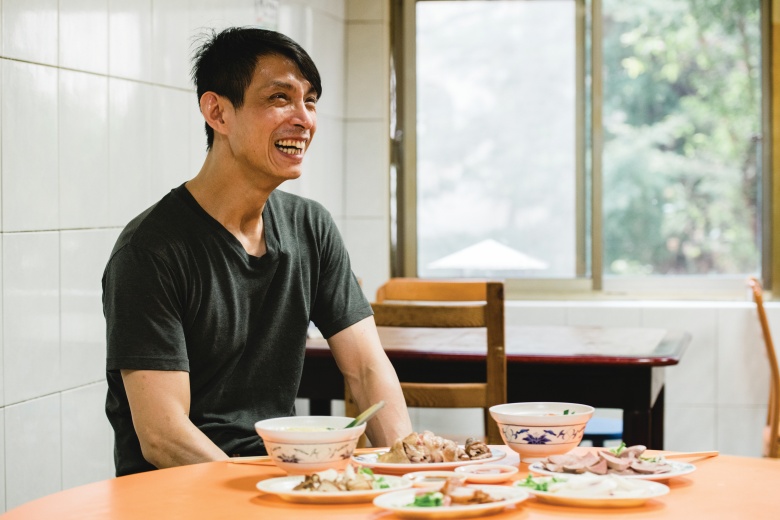
Following his grandfather’s tradition, Ye posts no menu, instead greeting people at the open-front entrance as his grandfather did, showing them what’s available. This is not an issue for visitors from elsewhere in Asia, he says, who have similar-style establishments back home and have always visited in a steady stream. Westerners have tended to be a little hesitant, but many who are now showing up have obviously learned of the Michelin recommendation, and know what they are looking for. In any event, Ye says, there’s always a customer or two on hand who can help with a little English.
“We invite all friends visiting Taipei to come to pay us a visit,” he says with a smile. “It would be our great honor to let them experience the traditions of our grandfather, and to treat them to some of the true old-time tastes of Taiwan.
Mai Mien Yen Tsai ( 賣麵炎仔 )
106, Anxi St., Datong Dist.
Monday to Sunday, 8:00am – 3:00pm
The Official Bib Gourmand Review of Mai Mien Yen Tsai
This shop on the ground floor of a somewhat dilapidated apartment has over 80 years of history. There is always a queue lining up for their egg or rice noodles, either served in a flavorsome stock made with pork bones, offal and chicken, or dressed in a sweet sauce. Side dishes such as pork offal, steamed chicken and blanched squid are also not to be missed. The signature fried braised pork, crispy and succulent, is only available after 10 am.
Interested in Taiwanese Food? Check out MyTaiwanTour’s Market Tour & Cooking Class
Read also:
Michelin Guide Showcases Taipei’s Thriving Culinary Scene: From Street Eats to Tasting Menus
Taiwan Culture and Cuisine Shine on New Netflix Series “Street Food”
Taïrroir, New Michelin star of Taiwan blends Chinese cuisine with western aesthetics
This article is reproduced under the permission of TAIPEI. Original content can be found at the website of Taipei Travel Net (www.travel.taipei/en).


